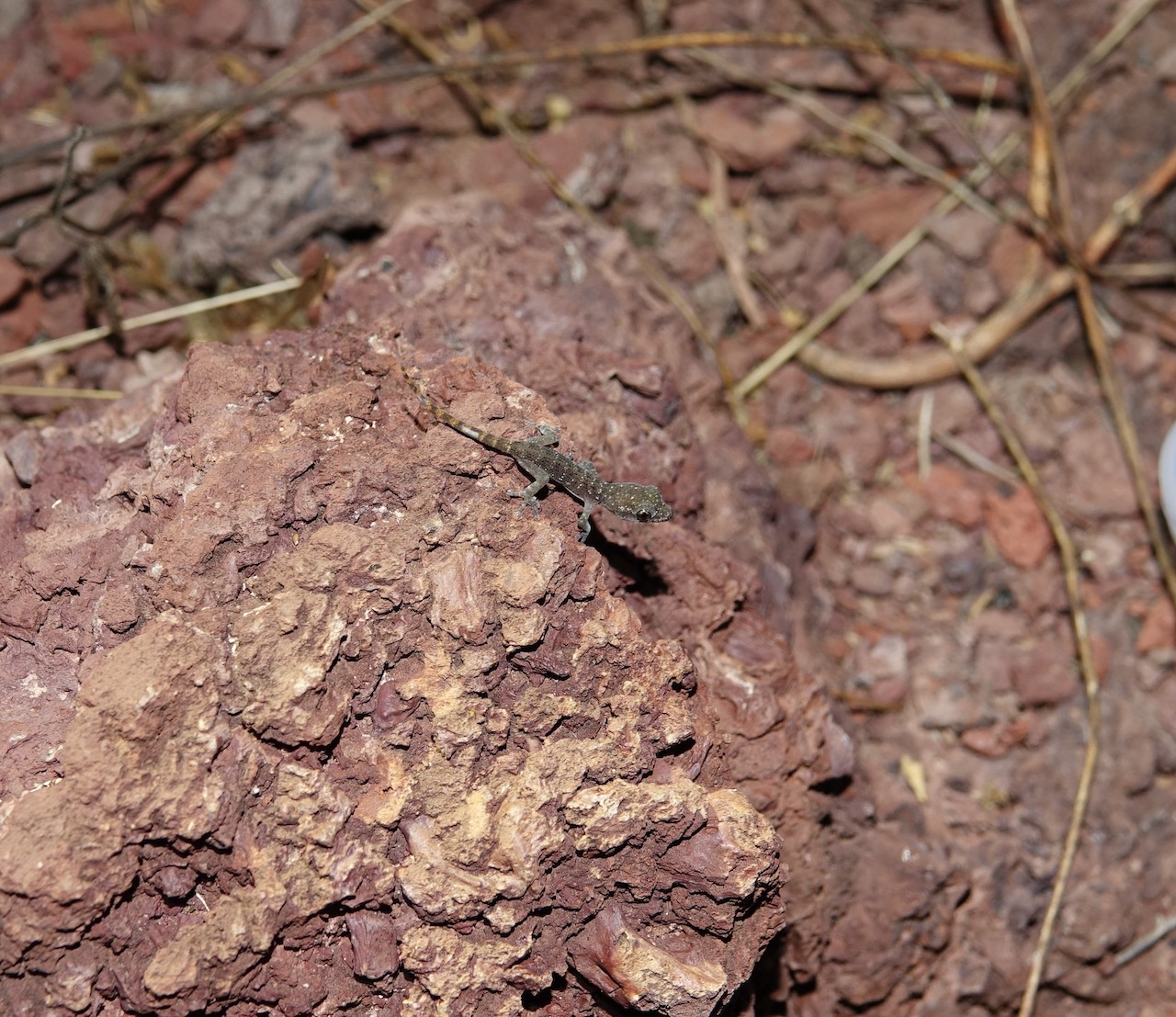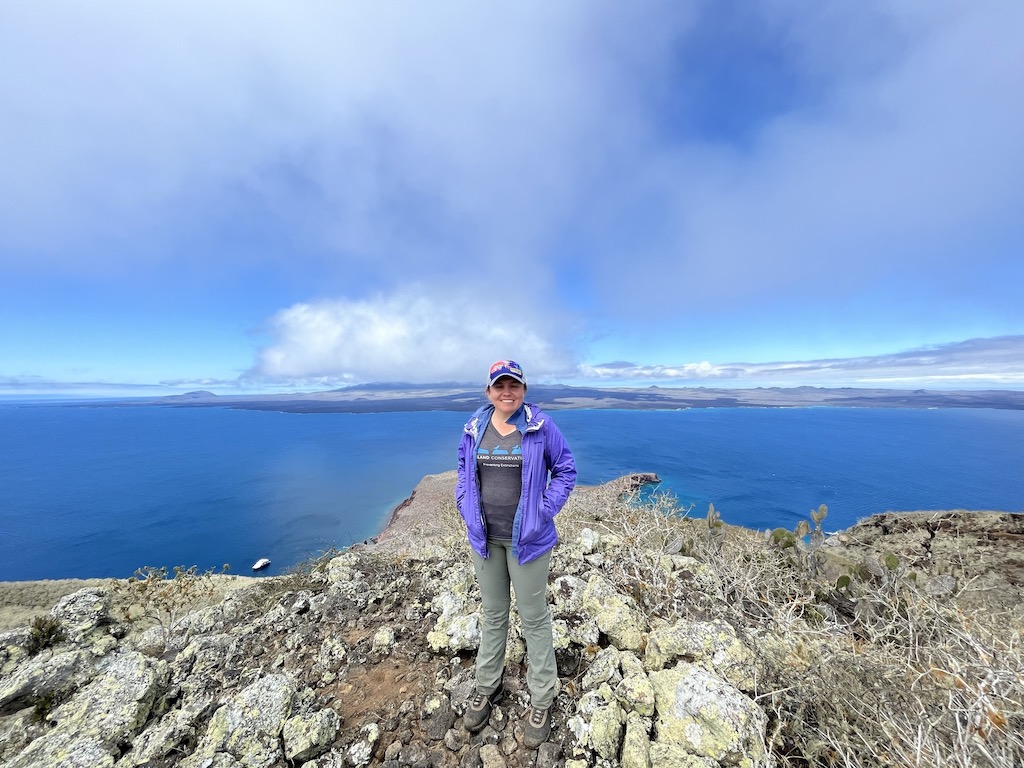- Mares’s leaf-toed gecko has been rediscovered on Rábida Island in the Galápagos after being thought extinct for more than a century, with only ancient bones as previous evidence of its existence.
- Invasive brown rats introduced by ships in the 17th and 18th centuries caused the gecko’s decline; feeding on their eggs and disrupting their nesting sites.
- A 2011 rat eradication program successfully removed all invasive rodents, and geckos were spotted just one year later — the first living sighting in recorded history.
- Genetic analysis revealed the surviving geckos are genetically distinct from populations on other Galápagos islands, suggesting they survived in hiding during the rat invasion rather than recolonizing from other islands.
On Rábida Island in the Galápagos, where red-tinged beaches meet ancient lava formations, Mares’s leaf-toed gecko (Phyllodactylus maresi) is back. Once thought extinct on this island, a genetically distinct population has survived here against all odds, scientists have now confirmed.
For more than a century, despite intensive collecting efforts across the Galápagos, no living specimen of P. maresi had been recorded on Rábida. The only evidence of their historical presence came from ancient subfossil bones dating back 5,700 to 8,540 years. The cause of their downfall? Rats.
Invasive brown rats (Rattus norvegicus), most likely brought by pirates or whalers in the 17th or 18th centuries, spread and created an ecological nightmare for native species. These new predators devoured gecko eggs, disrupted nesting sites, and disturbed the island’s delicate ecosystem balance. Native species either disappeared or retreated to precarious refugia.
However, in 2011, conservationists came in for the kill. Galápagos National Park, in partnership with NGOs Island Conservation, the Charles Darwin Foundation and The Raptor Center, launched a precision rodent eradication program targeting every invasive rat on Rábida Island.
Teams deployed poisoned bait, specifically for rats, across the island while carefully protecting native wildlife, said Island Conservation. The eradication had to be complete; leaving even a few breeding pairs would allow the rat population to recover within months.

With the rats out of the way, the ecological response was swift and dramatic. Just one year after the rodent removal, park rangers monitoring the island’s recovery spotted a small, nocturnal gecko with distinctive leaf-shaped toe pads. This represented the first confirmed sighting of a living P. maresi on Rábida in recorded history.
“People often imagine that nature may take a long time (20-50 years or more) to respond. But, when the correct pressures are removed, this is not always true,” Paula Castaño, Island Conservation’s impact program manager, told Mongabay in an email. “We often see these changes happening quickly, sometimes just in one or two years.”
However, scientific confirmation requires more than sightings. Between 2019 and 2021, research expeditions led by scientists from the QCAZ Museum of Zoology at the Pontifical Catholic University of Ecuador, Island Conservation, Re:wild, and the Galápagos National Park Directorate returned to Rábida with a crucial mission: to collect example specimens and genetic samples.

Working under the cover of darkness, when these elusive geckos are most active, researchers captured specimens by hand as they foraged on lava rocks and tree trunks up to 2 meters (about 6 feet) above the ground.
“For over a decade, I have worked with Galápagos geckos, and this research underscores the critical value of collecting specimens and genomic samples for both scientific discovery and conservation efforts in the Galápagos,” said Omar Torres-Carvajal, curator of reptiles at QCAZ Museum of Zoology. “This archipelago still holds hidden surprises, waiting to be discovered.”
Through genetic analysis, researchers found that the Rábida population is a genetically distinct group within P. maresi, separated by 19 genetic mutations from populations on nearby Santiago Island. This genetic distinctiveness led researchers to designate the Rábida geckos as a separate “evolutionarily significant unit,” or ESU, a classification that highlights their unique conservation value.
This level of genetic differentiation supports the idea that the Rábida population survived in refugia during the rat invasion period, rather than recently recolonizing from other islands after the 2011 eradication. The findings, published in the journal PLOS ONE, represent the first peer-reviewed documentation of living leaf-toed geckos on Rábida Island.
“The swift recovery of biodiversity we continue to see on islands across the globe tells us that nature, and island ecosystems in particular, are extremely resilient,” Castaño told Mongabay. “It shows us that it only takes a few people, government willingness, and funding support to help these remarkable ecosystems recover and bring species back from the brink of extinction.”

The Rábida gecko exemplifies what she calls “resurrection ecology.” “The Rábida gecko is an excellent example of nature’s resiliency, and it is an opportunity to highlight that we, as humanity, are not only the problem, but we also are the solution for the current biodiversity and climate crisis we are experiencing on our planet,” Castaño told Mongabay.
For example, on Floreana, another of the Galápagos islands, only a year after invasive predator removal began, Galápagos rails (Laterallus spilonota) were recorded back on the island for the first time in almost 200 years. The last scientist to record the birds’ presence there was Charles Darwin, back in 1835.
The transformation extends beyond the Galápagos. On nearby Pinzón Island, following similar rodent eradication efforts, giant tortoises have returned to nest naturally after more than 150 years. “Because of our work to remove invasive rodents, the population now reproduces naturally without human intervention,” said Danny Rueda Córdova, director of Galápagos National Park.
The success on Rábida reflects a pattern Castaño has witnessed across island ecosystems worldwide. Similar recoveries have occurred on Kamaka Island in French Polynesia, where Polynesian storm-petrels (Nesofregetta fuliginosa) returned after more than a century of absence;on Pajaro Uno Island off Chile, where Peruvian diving-petrels (Pelecanoides garnotii) are nesting again after decades; on Desecheo Island in Puerto Rico, where Audubon’s shearwaters (Puffinus lherminieri) are nesting for the first time in recorded history; and on Loosiep Island in Micronesia, where turtles have resumed nesting after a 50-year absence.

“These types of results are the fuel of our work at Island Conservation,” Castaño told Mongabay. “It motivates us all daily to wake up and work to restore islands for nature and people worldwide. The rediscovery of the Rábida gecko is just an example of the remarkable resilience of nature and the power of island restoration.”
Yet challenges remain, including climate change and the threat of new invasive species. The gecko population, while recovering, remains small and vulnerable, requiring continued monitoring and protection.
“The return of the Rábida gecko is clear example of how our investment in island restoration can significantly impact nature and all the human communities that depend on those resources or call those places home,” Castaño told Mongabay. “It is an invitation to each of us, wherever we are in the world, to put our little grain of sand to make this world a great place for all of us, where we continue to thrive together with nature.”
Banner image of Mares’s leaf-toed gecko (Phyllodactylus maresi) courtesy of Island Conservation.
Liz Kimbrough is a senior staff writer for Mongabay and holds a Ph.D. in Ecology and Evolutionary Biology from Tulane University, in New Orleans, Louisiana where she studied the microbiomes of trees. View more of her reporting here
World’s smallest snake spotted by scientists in Barbados after 20-year absence
Citation:
Torres-Carvajal, O., Castaño, P. A., Rincón, E., Ayala-Varela, F., Campbell, K., Cabrera, W., & Moreno, F. (2025). Phylogeny, phylogeography, and conservation of a rediscovered gecko from the Galápagos Islands. PLOS ONE, 20(6), e0324659. doi:10.1371/journal.pone.0324659
FEEDBACK: Use this form to send a message directly to the author of this post. If you want to post a public comment, you can do that at the bottom of the page.




